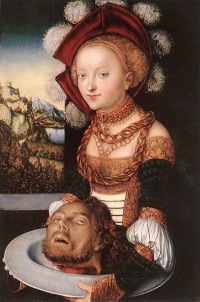Hungary
From The Art and Popular Culture Encyclopedia
| Revision as of 15:18, 4 March 2023 Jahsonic (Talk | contribs) ← Previous diff |
Revision as of 15:20, 4 March 2023 Jahsonic (Talk | contribs) Next diff → |
||
| Line 47: | Line 47: | ||
| * [[Gregor Baci]] | * [[Gregor Baci]] | ||
| *[[Mihály Zichy]] | *[[Mihály Zichy]] | ||
| + | *[[György Pálfi ]] | ||
| {{GFDL}} | {{GFDL}} | ||
Revision as of 15:20, 4 March 2023

|
Hungarian Dances, Elizabeth Báthory, The Grand Budapest Hotel, |
|
Related e |
|
Featured: |
The Republic of Hungary is a landlocked country in Central Europe, bordered by Austria, Slovakia, Ukraine, Romania, Serbia, Croatia and Slovenia. Its capital is Budapest.
Culture
The culture of Hungary is rich and varied, from the twin cities of Buda and Pest on the Danube, to the Great Plain bordering Ukraine. Today's Hungary was formerly (until 1918) part of the Austro-Hungarian empire. Hungary has great folk traditions, producing embroideries, pottery, decorated buildings, and carvings. Hungarian music ranges from the rhapsodies of Franz Liszt to Roma and folk music.
Hungary has a great literature, with many poets and writers, although not many are well known abroad due to the limited prevalence of the Hungarian language as a Finno-Ugric language. Some noted authors include Sándor Márai and Imre Kertész, who have been gaining acclaim in recent decades. János Kodolányi was more known in the middle of the twentieth century in Italy and Finland. Sándor Márai has a growing popularity nowadays in Europe. Imre Kertész won the Nobel Prize in Literature in 2002. Péter Esterházy is known and popular in Austria and Germany, and Magda Szabó has become well-known in Europe recently as well.
Hungarian cuisine includes many pork and beef dishes, particularly goulash (a beef soup – gulya means a herd of cows, gulyás is like 'cowboy'), or a stew known in Hungarian as pörkölt. Dishes are often flavoured with paprika. Hungary also produces wine, including Tokaji from Tokaj.
Music
The music of Hungary consists mainly of traditional Hungarian folk music and music by prominent composers such as Ferenc Liszt (known in the West as Franz Liszt), Franz Schmidt, Dohnányi, Bartók, Kodály, and Rózsa. Traditional Hungarian music tends to have a strong dactylic rhythm, as in the Hungarian language the first syllable of each word is invariably stressed. Hungary also has a number of internationally renowned composers of contemporary classical music, including György Ligeti, György Kurtág, Péter Eötvös and Zoltán Jeney, among others.
Hungary has made many contributions to the fields of folk, popular, and classical music. Hungarian folk music is a prominent part of the national identity and continues to play a major part in Hungarian music. Hungarian folk music has been influential in neighboring areas such as Romania, Slovakia, Poland, and especially in southern Slovakia and the Romanian region of Transylvania, both home to significant numbers of Hungarians.
Broughton claims that Hungary's "infectious sound has been surprisingly influential on neighbouring countries (thanks perhaps to the common Austro-Hungarian history) and it's not uncommon to hear Hungarian-sounding tunes in Romania, Slovakia and southern Poland". It is also strong in the Szabolcs-Szatmár area, and in the southwest part of Transdanubia, near the border with Croatia. The Busójárás carnival in Mohács is a major Hungarian folk music event, formerly featuring the long-established and well-regarded Bogyiszló orchestra.
Hungarian classical music has long been an "experiment, made from Hungarian antedecents and on Hungarian soil, to create a conscious musical culture [using the] musical world of the folk song". Although the Hungarian upper class has long had cultural and political connections with the rest of Europe, leading to an influx of European musical ideas, the rural peasants maintained their own traditions, so that by the end of the 19th century Hungarian composers could draw on rural peasant music to (re)create a Hungarian classical style. For example, Béla Bartók and Zoltán Kodály, two of Hungary's most famous composers, are known for using folk themes in their music. Bartók collected folk songs from across Central Europe, including Romania and Slovakia, whilst Kodály was more interested in creating a distinctively Hungarian musical style.
During the era of Communist rule in Hungary (1944–1989), a Song Committee scoured and censored popular music for traces of subversion and ideological impurity. Since then, however, the Hungarian music industry has begun to recover, producing successful performers in the fields of jazz such as trumpeter Rudolf Tomsits, pianist-composer Károly Binder, and in a modernized form of Hungarian folk, Ferenc Sebő and Márta Sebestyén. The three giants of Hungarian rock, Illés, Metró, and Omega, remain very popular, especially Omega, which, besides Hungary, has followings in Germany and beyond. Veteran underground bands from the 1980s such as Beatrice also remain popular.
See also
- List of Hungarians
- List of Hungarian painters
- List of museums in Hungary
- Renaissance architecture in Eastern Europe
- National symbols of Hungary
- Cinema of Hungary
- Elizabeth Báthory
- György Ligeti
- László Moholy-Nagy
- André Kertész
- Christa Winsloe
- Antti Lovag
- Hungarian Uprising
- Charlotte Bach
- Bela Lugosi
- Richard von Krafft-Ebing
- George Antheil
- Molnár
- Max Nordau
- Gregor Baci
- Mihály Zichy
- György Pálfi

